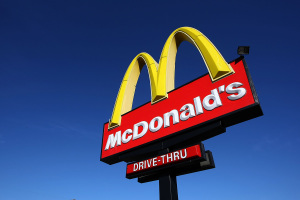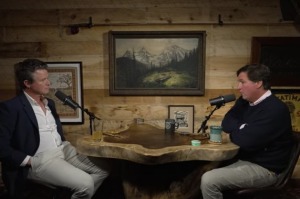Wildfire Threatening Los Alamos Lab Nears Record Size
The Las Conchas Fire, as the wildfire is officially called, is expected to become the largest in New Mexico history.
The blaze that started on June 26 in the Santa Fe National Forest has burned approximately 92,735 acres and is set to surpass the 2003 Dry Lake Fire that burned more than 94,000 acres of Gila National Forest.
Fire officials, nevertheless, remained confident Thursday that despite strong, erratic winds, the New Mexico fire would not reach the Los Alamos National Laboratory, the premier nuclear-weapon laboratory in the country, even as they battled the blaze that crept into a canyon that descends into the town of Los Alamos and parts of the lab.
Two hundred firefighters were scrambling to contain the blaze in Los Alamos Canyon, which runs past the old Manhattan Project site in town and a 1940s era dump site where workers are near the end of a clean-up project of low-level radioactive waste. The World War II Manhattan Project developed the first atomic bomb, and workers from the era dumped hazardous and radioactive waste in trenches along six acres atop the mesa where the town sits, The Associated Press reported.
“The threat is pretty limited,” said Kevin Smith, the Department of Energy’s National Nuclear Security Administration site manager for Los Alamos, which oversees the lab. “Most of the materials have been dug up.”
Los Alamos Canyon runs through town and a portion of the northern end of the lab, where a weapons research nuclear reactor was located until it was demolished in 2003.
The nuclear facility was shut down Monday and will remain closed through Friday, July 1, the lab’s website said.
The officials have said that the threat of the fire has reduced, amid the news that three percent of the fire was contained Thursday.
Los Alamos County Fire Chief Doug Tucker said the area in the canyon that was burning had been thinned, providing a safe area for firefighters to attack it, news agency reported.
“Am I concerned? Yes. Do I feel threatened? No. But it’s fire and it’s dangerous,” Tucker said.
Nearly 12,000 residents of Los Alamos, who were evacuated earlier in the week, won’t be allowed back home until Monday, July 4, Tucker said.
However, Tucker added that re-entry would be much easier for residents as no utilities had been turned off which meant everything would be open and working when those residents did return home, KOB.com reported.
While residents will not yet be allowed back, Los Alamos Police Chief Wayne Torpy said that the city and county hoped to have staffing return by Friday, though this should not be taken as a sign that the evacuations have lifted. Torpy told residents who heard of their friends returning to work to not assume that it was time to return home.
Earlier, according to The Associate Press, lab officials were trying to determine the extent to which experiments at the facility have been affected by a shutdown caused by the fast-moving fire. Lab Director Charles McMillan said teams would quickly figure out how things stood as soon as they were able to return.
Though the physical risk to the lab from the fire apparently had lessened Thursday, McMillan said “the laboratory is not just a bunch of buildings.”
“It’s not just a bunch of equipment. The laboratory is the people of the laboratory. That is the fundamental asset that this laboratory has and those people live all over northern New Mexico,” he said.
McMillan expressed concern for several lab employees who have lost their homes in the Jemez and Cochiti areas.
On Monday, about 10,000 experiments running at the same time were put on hold as nearly an acre of lab property was burned. Though the fire was quickly extinguished, concerns were raised about possible contamination from material stored or buried on lab grounds. The fears were later quelled when the air samples collected through radiation monitors were found to be free of anything abnormal.
Anti-nuclear groups had also sounded the alarm about thousands of 55-gallon drums containing low-grade nuclear waste – gloves, tools, even paper notes and other contaminated items – about two miles from the fire.
Lab officials said it was highly unlikely the blaze would reach the drums, and that the steel containers can in any case withstand flames and will be sprayed with fire-resistant foam if necessary.
“The nuclear materials are secure,” said Penn State University nuclear engineering professor Barry Scheetz, who has served on National Academy of Sciences nuclear review boards and has been to Los Alamos several times. “There’s multiple redundancy in the protection of this material,” The Associated Press quoted him as saying.




























